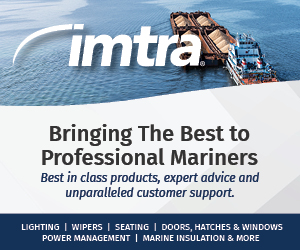The first session of the recently concluded Inland Marine Expo detailed and celebrated the close collaboration between private barge operators, the Corps of Engineers and Coast Guard in applying lessons learned from the 2022 low water to that of 2023. As Justin Lampert, senior manager of The American Waterways Operators’ mid-continent office, pointed out in his introduction to the expert panel, the impacts of the 2023 low water were much reduced compared to that of 2022—although river levels were just as low.
There were many reasons for this. The Corps dredging program was much more closely coordinated with the needs of industry and targeted to developing shallow spots and choke points. Access to three dredges—two Corps dustpans and Pine Bluff’s Wallace McGeorge—was also important. Management of towing queues at hot spots was better. Bridge-to-bridge communication between towboats was more closely coordinated. Management of barge drafts was improved, even when loads had to be lightened. All these measures from lessons learned resulted in more tonnage being safely and efficiently moved in trying low-water conditions.
It’s always encouraging to hear about how well the industry copes with unexpected conditions. It’s good to celebrate the close cooperation that exists between our industry, the Corps of Engineers and Coast Guard, and to give due credit to all. Let’s never pass up an opportunity to praise and thank those responsible.
But we can’t let Congress or the public forget that inspired coordination to cope with low or high water is only a stop-gap measure. “If it bleeds, it leads” remains an unfortunate reality of the news cycle and public interest. Hurricanes, floods, low- and high-water disasters may result in short-term funding from Congress showing it can “do something” and deal with immediate situations. But when the headlines fade and attention shifts, or is taken up with the next crisis, long-term funding to deal with contributing conditions is often still left in the lurch.
It’s always more expensive in the long run to react to crises instead of planning for them. Heroic work-arounds are still work-arounds. They don’t remove the continuing need for funding for the lock and dam system, for more dredges for the Corps of Engineers, for increased deployment of private industry dredges, and for more Coast Guard buoy-tenders.
By constantly applying lessons learned and coping better with each low- or high-water event, our industry leaders are doing what they can do to respond to changing conditions on the waterways. Their efforts deserve all praise, but they don’t erase the fact that the marine transportation system has suffered decades of under-investment and neglect—to the point that our competitors in world markets are eroding our former transportation advantage for agricultural products that move by barge.




